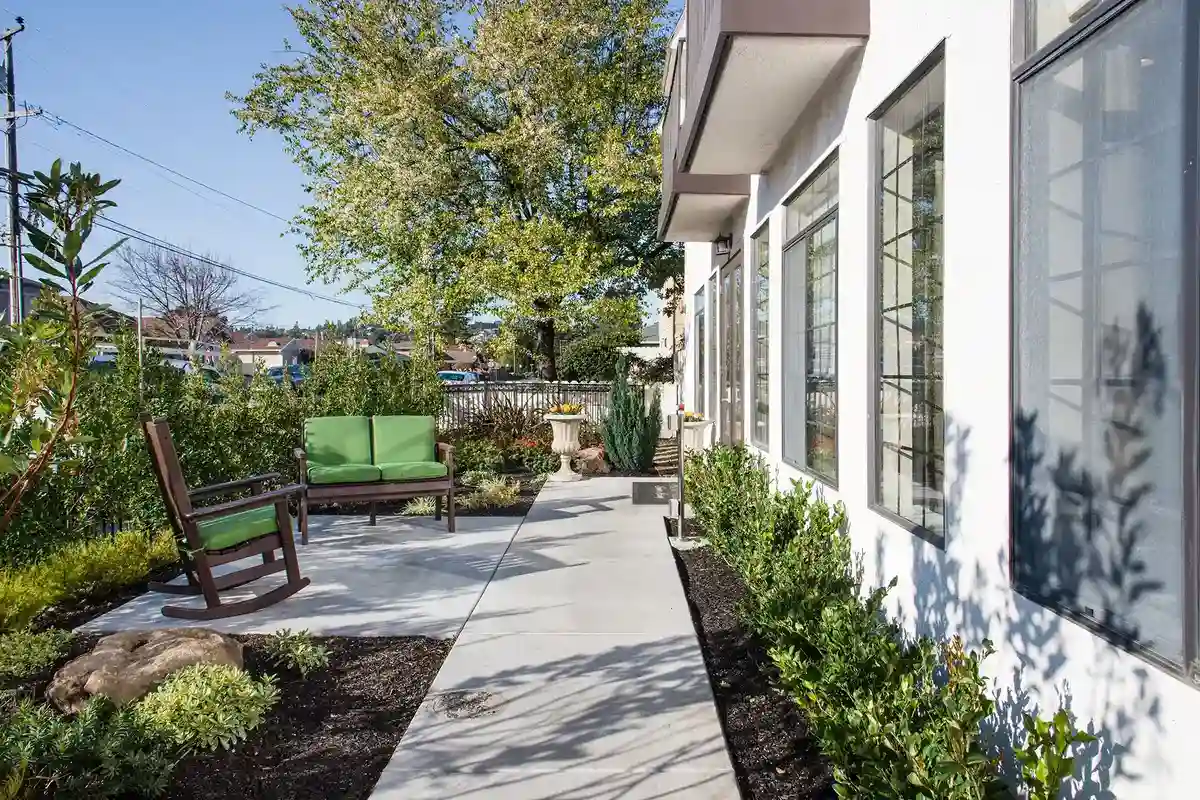
What Makes a Memory Care Facility Different from Other Senior Living Options
Memory care facility selection represents one of the most challenging and emotionally demanding decisions families face when caring for loved ones with Alzheimer’s disease, dementia, or other cognitive impairments. Unlike traditional assisted living communities, a specialized memory care facility provides comprehensive support designed specifically for individuals experiencing memory loss, behavioral changes, and declining cognitive function. With over 6 million Americans currently living with Alzheimer’s disease, the need for quality memory care services continues to grow exponentially.
For families in Castro Valley and the greater Bay Area, understanding what makes an exceptional memory care facility can mean the difference between simply managing a condition and truly enhancing quality of life. These specialized communities offer more than just supervision – they provide hope, dignity, and purposeful living for residents while offering peace of mind for families navigating this difficult journey.
The decision to move a loved one into a memory care facility often comes after months or years of trying to manage care at home. Recognizing when this transition becomes necessary isn’t just about safety concerns; it’s about acknowledging when professional, round-the-clock care can better serve your family member’s evolving needs. This comprehensive guide will walk you through everything you need to know about memory care facilities, from identifying the right time for this transition to selecting the perfect community for your loved one.
A memory care facility stands apart from traditional assisted living and nursing homes through its specialized approach to cognitive care. While assisted living communities focus on helping residents with daily activities like bathing, dressing, and medication management, memory care facilities go several steps further by addressing the unique challenges associated with dementia and Alzheimer’s disease.
Specialized Training and Expert Staff
The most significant difference lies in staff training and expertise. Every team member at a reputable memory care facility receives extensive education in dementia care techniques, communication strategies for cognitive impairment, and de-escalation methods for managing challenging behaviors. This specialized training enables staff to recognize early signs of distress, understand the underlying causes of behavioral changes, and respond with appropriate interventions.
Care teams typically include registered nurses, certified nursing assistants, activity directors with dementia-specific training, and often specialists like occupational therapists or social workers. The staff-to-resident ratio in memory care facilities is generally higher than in other senior living options, ensuring that each resident receives the individualized attention they need throughout the day and night.
Secure Environment Designed for Safety
Security features in a memory care facility are thoughtfully integrated to prevent wandering while maintaining a homelike atmosphere. These may include secured perimeters, alarmed doors, specially designed gardens with walking paths that loop back to the building, and discrete monitoring systems. Unlike institutional settings, these security measures are implemented in ways that don’t feel restrictive to residents.
The physical environment is also designed to reduce confusion and anxiety. This includes consistent lighting to minimize sundowning effects, color-coded hallways to aid navigation, familiar decor that evokes positive memories, and elimination of potentially dangerous items while maintaining a comfortable living space.
Personalized Care Plans for Each Resident
Every resident in a quality memory care facility receives an individualized care plan that evolves with their changing needs. These plans consider not just medical requirements but also personal history, preferences, triggers, and effective communication strategies. Regular assessments ensure that care approaches are adjusted as the disease progresses, maintaining the highest possible quality of life at each stage.
Signs Your Loved One May Need Memory Care Facility Services
Recognizing when home care is no longer sufficient can be one of the most difficult realizations for families. Many adult children struggle with guilt, feeling like they’re abandoning their parents or giving up too soon. However, understanding the warning signs can help you make this decision from a place of love rather than crisis.
Early Warning Signs to Watch For
Safety concerns often serve as the first indicator that a memory care facility might be necessary. These can include leaving the stove on, getting lost in familiar neighborhoods, medication errors, or falls due to confusion. Behavioral changes such as increased agitation, sleep disturbances, or personality shifts that strain family relationships are also important indicators.
Social isolation represents another crucial sign. When loved ones begin withdrawing from activities they once enjoyed, stop maintaining personal hygiene, or seem confused about familiar people and places, professional care can provide the structure and stimulation needed to maintain cognitive function longer.
When Home Care Is No Longer Sufficient
Even with the best intentions and resources, home care has limitations. If family members are experiencing caregiver burnout, if the person with dementia requires supervision beyond what can be safely provided at home, or if behavioral issues are escalating beyond the family’s ability to manage, it may be time to consider a memory care facility.
Financial considerations also play a role. The cost of round-the-clock home care often exceeds the cost of memory care facility placement, especially when you factor in the specialized training and resources that professional facilities provide.
Making the Transition Easier for Everyone
When the decision is made, involving your loved one in the process as much as their cognitive ability allows can help reduce anxiety and resistance. Visiting potential facilities together, bringing familiar items to their new room, and maintaining consistent visiting schedules can ease the transition for everyone involved.
Essential Features to Look for in a Memory Care Facility
Not all memory care facilities are created equal. Understanding what features and services are essential versus nice-to-have can help you evaluate options effectively and choose the best fit for your loved one’s specific needs.
Secure and Therapeutic Environment Design
The physical environment in a quality memory care facility should feel welcoming rather than institutional. Look for communities that incorporate biophilic design elements like natural lighting, indoor plants, and views of nature. Therapeutic gardens provide safe outdoor spaces for walking and fresh air, which can significantly improve mood and sleep patterns.
Interior design should minimize confusion while maximizing safety. This includes clear sight lines throughout common areas, consistent color schemes, easy-to-read signage with both words and pictures, and furniture arranged to encourage social interaction while providing quiet spaces for those who become overwhelmed.
Comprehensive Medical Support and Monitoring
Medical care coordination is crucial in a memory care facility. The community should have registered nurses on staff 24/7, established relationships with geriatricians and neurologists who specialize in dementia care, and protocols for managing common complications like medication interactions or sudden behavioral changes.
Regular health monitoring goes beyond basic vital signs to include cognitive assessments, nutritional evaluations, and mobility assessments. The facility should also have procedures for communicating with families about health changes and involving them in care decisions.
Life-Enriching Activities and Programs
Therapeutic programming in a memory care facility should be designed specifically for individuals with cognitive impairment. This might include music therapy, art therapy, reminiscence activities, sensory stimulation programs, and gentle exercise classes adapted for varying ability levels.
The best programs focus on preserving dignity and utilizing remaining abilities rather than highlighting limitations. Activities should be meaningful and connect to residents’ past interests and experiences, helping maintain their sense of identity and purpose.
Family Involvement and Communication
A quality memory care facility encourages family involvement through regular communication, family education programs, support groups, and inclusive events. The facility should provide multiple ways for families to stay connected with their loved ones and informed about their care.
Understanding Memory Care Facility Costs and Payment Options
The financial aspect of memory care can be overwhelming for families already dealing with the emotional challenges of dementia care. Understanding the cost structure and available payment options can help you plan effectively and make informed decisions.
Breaking Down Monthly Expenses
Memory care facility costs vary significantly based on location, level of care required, and amenities provided. In the Castro Valley area, families can expect monthly costs to range from $4,000 to $8,000 or more, depending on the specific facility and care needs.
These costs typically include housing, meals, personal care assistance, medication management, activities programming, and basic medical monitoring. Additional services like physical therapy, specialized medical care, or one-on-one companionship may incur extra charges.
Insurance Coverage and Medicare Considerations
Unfortunately, Medicare does not cover the custodial care provided in memory care facilities. However, Medicare may cover certain medical services provided within the facility, such as physician visits or skilled nursing care for specific conditions.
Long-term care insurance, if purchased before the onset of dementia symptoms, may provide significant coverage for memory care facility costs. Medicaid may also provide coverage for those who meet financial eligibility requirements, though availability varies by state and specific facility participation.
Financial Planning Strategies for Families
Many families find it helpful to consult with an elder law attorney who can provide guidance on protecting assets while ensuring access to needed care. Veterans and their spouses may be eligible for benefits through the VA’s Aid and Attendance program, which can help offset memory care facility costs.
How to Choose the Right Memory Care Facility in Castro Valley
Selecting the right memory care facility requires careful evaluation of multiple factors beyond just cost and location. The decision will impact your loved one’s daily experience and overall quality of life, making thorough research essential.
Questions to Ask During Your Visit
When touring potential facilities, prepare a list of specific questions about staffing ratios, staff turnover rates, emergency procedures, and how they handle behavioral challenges. Ask about their approach to end-of-life care and whether they can accommodate residents throughout the progression of dementia.
Inquire about their medication management protocols, meal programs for residents with swallowing difficulties, and how they maintain family communication. Don’t hesitate to ask for references from current families or to speak with the director of nursing about specific care concerns.
Evaluating Staff Qualifications and Ratios
The quality of care in any memory care facility ultimately depends on the staff. Look for communities that invest in ongoing education for their employees, have low turnover rates, and maintain appropriate staffing levels throughout all shifts, including weekends and holidays.
During your visit, observe how staff members interact with residents. Do they make eye contact? Do they speak respectfully and patiently? Are they responsive to residents’ needs and requests? These observations can tell you more about the quality of care than any brochure or marketing material.
Assessing the Community Atmosphere
The overall atmosphere of a memory care facility should feel warm, welcoming, and active without being chaotic. Listen to the sounds in the community – you should hear conversation, laughter, and activity rather than television noise or silence.
Pay attention to how residents appear. Are they dressed appropriately and well-groomed? Do they seem engaged with activities or staff? Are they free to move around safely, or do they appear restrained or sedated?
Location Benefits and Family Accessibility
While the quality of care should be the primary consideration, location matters for maintaining family connections. Choose a memory care facility that family members can visit regularly without undue hardship. Consider traffic patterns, parking availability, and proximity to medical specialists who may need to provide ongoing care.
Choosing the Right Memory Care Facility Path in Castro Valley
Navigating the decision to move a loved one into memory care is never easy, but understanding your options can help transform a difficult transition into an opportunity for improved safety, dignity, and quality of life. Specialized memory care communities in Castro Valley provide far more than supervision; they offer structured support, therapeutic environments, and compassionate staff trained to meet the unique needs of individuals with Alzheimer’s, dementia, and other cognitive challenges.
By carefully evaluating features such as staff expertise, secure design, personalized care plans, and life-enriching activities, families can find a facility that aligns with their loved one’s needs and values. Financial planning, open communication, and involving family in the process can make the transition smoother and less overwhelming.
Ultimately, the right memory care facility is not just about meeting medical needs; it’s about preserving joy, fostering connection, and giving families peace of mind that their loved one is living in a safe, supportive, and purposeful environment. Taking this step ensures that your loved one continues to thrive in a community designed with their well-being at heart.
Begin Your Memory Care Journey with Carefield Castro Valley
If you’re considering memory care options for your loved one in the Castro Valley area, Carefield Castro Valley is here to help guide you through this important decision. Our compassionate team understands the unique challenges families face when seeking specialized memory care services. We invite you to contact us at 510-582-2765 to schedule a personalized tour of our community or to speak with our expert care coordinators about your specific needs.
You can also visit us at 19960 Santa Maria Ave, Castro Valley, CA 94546 to experience firsthand the warmth and vitality of our community and explore our inviting spaces designed specifically for memory care. Our dedicated team is ready to meet with you and help you envision the enriching lifestyle awaiting your loved one.
Frequently Asked Questions
1. What is a memory care facility?
A memory care facility is a specialized type of senior living community designed specifically for individuals with Alzheimer’s disease, dementia, and other forms of cognitive impairment. These facilities provide 24-hour supervision, specialized care programming, and secure environments to ensure resident safety while maintaining dignity and quality of life.
2. What is the difference between memory care and dementia care?
Memory care and dementia care are often used interchangeably, as dementia is the umbrella term for various conditions that cause memory loss, including Alzheimer’s disease. A memory care facility typically serves individuals with all types of dementia, providing specialized care for the various symptoms and stages of cognitive decline.
3. How much does it cost to put someone in a memory care facility?
Costs vary significantly by location and level of care needed. In the Castro Valley area, families can expect to pay between $4,000 and $8,000 per month or more. This typically includes housing, meals, personal care, medication management, and activities, though additional services may incur extra charges.
4. When should someone go to a memory care facility?
The decision typically becomes necessary when safety concerns arise, when behavioral symptoms become difficult to manage at home, when the person requires more supervision than can be safely provided in a home setting, or when family caregivers are experiencing burnout that affects their ability to provide adequate care.
5. Will Medicare pay for a memory care facility?
Medicare does not cover the custodial care provided in memory care facilities. However, Medicare may cover specific medical services provided within the facility. Long-term care insurance, Medicaid (for those who qualify), and VA benefits may provide coverage options.
6. How do I know if my loved one is ready for memory care?
Signs include increasing safety concerns, wandering or getting lost, medication management errors, significant behavioral changes, sleep disturbances that affect others in the household, and when home care becomes insufficient to meet their needs safely.
7. What should I bring when moving my loved one to memory care?
Bring familiar items like favorite photos, comfortable clothing, a favorite chair or blanket, personal care items, and any special objects that provide comfort. Avoid valuable items or anything that could pose safety risks.
Key Takeaways
- Choosing the right memory care facility requires careful consideration of specialized care features, staff qualifications, environmental design, and cost factors. A quality facility should provide secure, therapeutic environments with trained staff who understand the unique needs of individuals with cognitive impairment.
- The decision to move a loved one to a memory care facility often comes when safety concerns arise or when home care becomes insufficient. This transition, while difficult, can significantly improve quality of life for both the individual with dementia and their family members.
- Financial planning for memory care should begin early, as costs can be substantial and insurance coverage is limited. Exploring all available payment options, including long-term care insurance, VA benefits, and Medicaid, can help families manage these expenses.
- Location matters for maintaining family connections, but the quality of care should always be the primary consideration. Regular visits to potential facilities, thorough questioning of staff and policies, and careful observation of the community atmosphere are essential steps in the selection process.
- The goal of any quality memory care facility should be preserving dignity, maximizing remaining abilities, and providing a safe, engaging environment where individuals with cognitive impairment can continue to experience joy and purpose in their daily lives.





